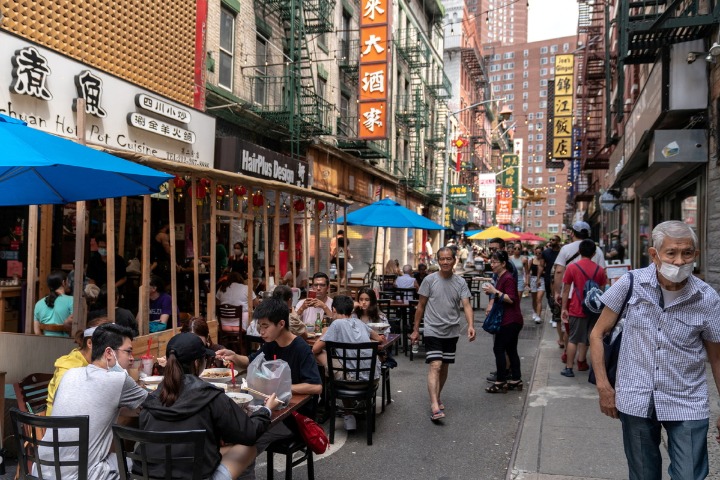
Authorities have reduced the number of bilingual street signs in New York City’s Chinatown district, but with many of them having been in place for more than 50 years, a campaign is underway to restore them.
Manhattan’s Chinatown has had bilingual street signs-with Chinese characters in addition to English-since 1969. Today, 101 out of about 155 of the signs remain across two dozen streets in the area.
Many of the signs were written in characters reflecting the Cantonese dialect spoken by the first Chinese immigrants in New York. Tan Bingzhong, a local calligrapher, wrote the characters on the signs by hand.
It appears that many of the signs began to be replaced in 2021, according to an analysis by The New York Times. Among the bilingual street signs that have been taken down include one at Canal Street and Allen Street. Others, including those on Pell Street at the Bowery and Catherine Street at Chatham Square, also have been changed to all-English signs.
The Chinese Chamber of Commerce was the first to petition the New York City traffic commissioner to install more street signs in Chinese in Chinatown.
The Chinese Benevolent Association, which represents 60 organizations, then urged the city to act by adding more street names.
The Museum of Chinese in America, an organization based in New York, is dedicated to documenting Chinese-American history, culture and heritage.
Museum President Nancy Yao Maasbach told China Daily: “It would be a pity to take down the signs without an adequate replacement. The bilingual signs create space for visitors and locals to grasp the significance of New York’s diversity.
“Chinatowns in the US represent the beauty and potential of America. It is neighborhoods like Chinatown that merge one culture with the myriad other cultures that comprise the American way of life.”
The New York City Department of Transportation is responsible for ensuring that infrastructure, such as street signs, is properly maintained.
The department told China Daily that if all street-name signs at an intersection are missing, it will replace them with “English-only signs while pending the fabrication of bilingual signs”.
In August, the department’s commissioner, Ydanis Rodriguez, and Borough Commissioner Ed Pincar joined with city council member Christopher Marte and state Senator Brian Kavanagh, along with local leaders, to announce the reinstallation of six bilingual street signs in Chinatown.
Mona Bruno, a spokesperson for the department, told China Daily: ” (The Department of Transportation) is pleased to maintain bilingual signage in Chinatown that celebrates the vibrant history of this community and helps Chinese Americans navigate the streets.”
The return of the bilingual street signs will also be important to local historians who believe that they chart the history and changes among Chinese immigrants to New York since the 1800s.
In the past few years, New York’s Chinatown has seen vast changes in its demographics. Asian residents have left the area in larger numbers than in any other borough in New York, data shows.
Some of the first Asian immigrants who settled in Lower Manhattan had earlier been recruited to work on the Transcontinental Railroad. Many faced discrimination and racism.



